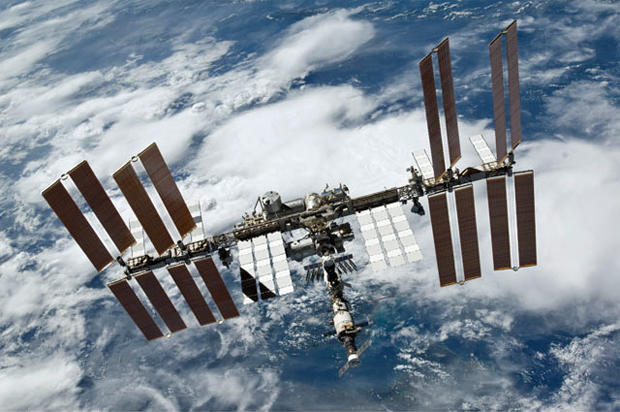Watch live: Spacewalk to upgrade power system on International Space Station
Watch a live stream in the video player above beginning at 7 a.m. ET.
Two astronauts geared up to float outside the International Space Station early Friday for the final stages of a multi-year 12-spacewalk job to replace 48 aging batteries in the lab’s solar power system with 24 more powerful lithium-ion units.
The work began in January 2017 and when it is completed next month, the space station’s power system should keep the lab running smoothly through the end of the decade if not beyond.
“I think it’s safe to say, barring any unforeseen type of failures, we’ll be good on batteries for a number of years to come,” said Kenny Todd, deputy space station program manager at the Johnson Space Center in Houston. “The longevity of the new technology batteries gets us well out through what will most likely be the end of the program.”
Floating in the Quest airlock module, station commander Chris Cassidy and Crew Dragon astronaut Robert Behnken planned to switch their spacesuits to battery power around 7:35 a.m. EDT to officially kick off a planned 6-hour 40-minute spacewalk.
NASA
Assisting with the lab’s robot arm from inside the station will be Douglas Hurley, Behnken’s crewmate aboard the SpaceX ferry ship that carried them to orbit May 30, and cosmonaut Ivan Vagner, who launched aboard a Soyuz on April 9 with Cassidy and cosmonaut Anatoly Ivanishin.
NASA is wrapping up the replacement of all 48 of the space station’s older-generation nickel-hydrogen batteries with 24 smaller yet more powerful lithium-ion units, along with circuit-completing “adapter plates” to fill in for batteries that were removed but not replaced.
The new batteries are arranged in sets of six in integrated electronics assemblies, or IEAs, at the bases of the station’s four main solar array wings. Each wing is made up of two extendable blankets of solar cells and the electricity they generate is delivered throughout the station using eight electrical buses, or channels, two per IEA.
Spacewalks in 2017 and March 2019 replaced the inboard solar array batteries with lithium-ion units.
For those replacements, the station’s robot arm had the reach necessary to assist the astronauts with battery relocations and unbolting and only four spacewalks were required. The outboard arrays and batteries pose a more difficult challenge.
During two spacewalks last October and another two more this past January — which were NASA’s second and third all-female spacewalks — astronauts replaced the batteries at the far left end of the station’s truss.
Because the outboard work site is so far from the robot arm’s outermost anchor point, four spacewalks were required because the astronauts had to manually move batteries back and forth between a storage pallet and the integrated electronics assembly where they were installed.
Cassidy and Behnken plan to carry out four essentially identical spacewalks to replace the 12 nickel-hydrogen batteries in the outboard right-side set of arrays, starting with Friday’s spacewalk and another next Wednesday.
Two more spacewalks next month will finish the job.
But those spacewalks will depend in part on how the first two go and the status of plans to bring Behnken and Hurley back to Earth in the Crew Dragon ferry ship around August 2. If problems crop up, the final two spacewalks could be deferred and carried out by a future station crew.




